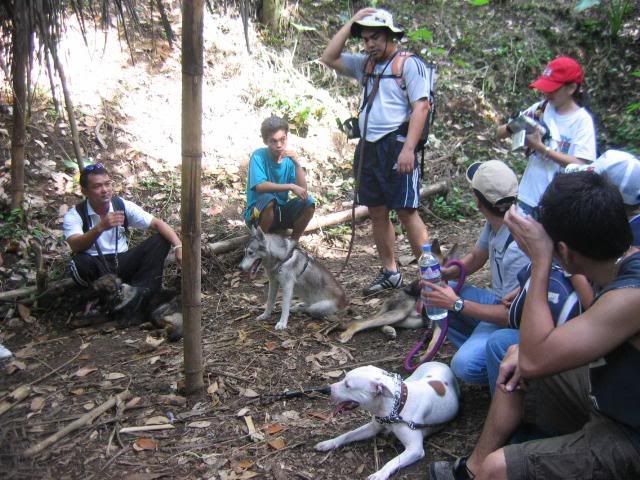*** *** *** ***
Friday, September 14, 2007
Hiking Tips
Dress in layers. Two thin layers are better than one thick layer. Tip: the new synthetic materials and fabrics are superior to cotton. Remember to wear a hat or bandanna to prevent heat loss.
Wear the proper footwear. Hiking boots are the most important investment a trail-bound hiker can make. Buy boots one-half size larger than your shoe size. Wear two pairs of socks; a thin, synthetic inner one that prevents moisture and a heavier outer sock for cushioned comfort.
Carry a day pack. Frameless packs are made specifically for hiking, since you’ll be carrying eight to 10 pounds of gear (backpack, water, snacks, first-aid, etc.). Make sure yours is equipped with shoulder pads. Also make sure to carry lightweight rain gear.
Never hike alone! This is especially important if an emergency occurs and you’re far from help. One hiker can stay with the injured person while two go for help.
Always stretch before beginning a hike. Set a comfortable pace and rest for a few minutes once each hour. Hiking protocol suggests that the strongest hiker slow to the pace of the weakest.
Use trail etiquette: downhill yields to uphill; stay to the right. Announce your intentions when you overtake or pass another on the trail. Dogs must be leashed at all times. Always carry out what you carry in and don’t feed, harass or chase wildlife.
Wear sunscreen.
Be aware of changes in the weather. The season can play a big role, depending on the area. Knowing the conditions you’re likely to encounter will help you dress accordingly.
Carry enough food and water, because hiking burns calories. Make sure to drink before you feel thirsty to avoid dehydration. A good rule is to bring one more meal than you’ll need. Never drink untreated trailhead water. Carry water purification tablets and/or filter.
Stay on the trail and watch your step! Trees and bushes can’t always hold you. Be alert for slippery areas. Most injuries and rescues take place off-trail. Most trails are marked, but if the markers are gone, use your compass and map.
Keep an eye out for snakes, bees and ticks. If you’re bitten by a snake, it is important to get to the nearest hospital emergency room as soon as possible.
Pay close attention to your surroundings and landmarks. Stay calm if you get lost, trust your map and compass. If you’re on a trail, don’t leave it. Stay put if it’s after nightfall, you’re injured or near exhaustion. As a last resort, follow water drainage or a stream downhill.
Hiking Essentials
1. Map and compass, GPS device
2. Extra food and water (and water purification means)
3. Rain gear and extra clothing (not cotton), spaceblanket
4. Firestarter and waterproof matches
5. First aid kit, insect repellent
6. Army knife or multi-purpose tool
7. Flashlight, extra bulbs
8. Hat, sunscreen and sunglasses
9. Cell phone, whistle, watch, camera, binoculars
10. Paper and pencil, tissue
Use Common Sense
This is the most important item you can bring on the trail.
Hiking Essentials for the Dogs
1. Long Leash
2. Body Harness
3. Plenty of Water
Note: Do not feed your dog before the hike.
dogman
Up and in running mode na tong blog site naten dogmans.. start blogging!! have a nice day..
-keep on working-
-keep on working-
Subscribe to:
Posts (Atom)





